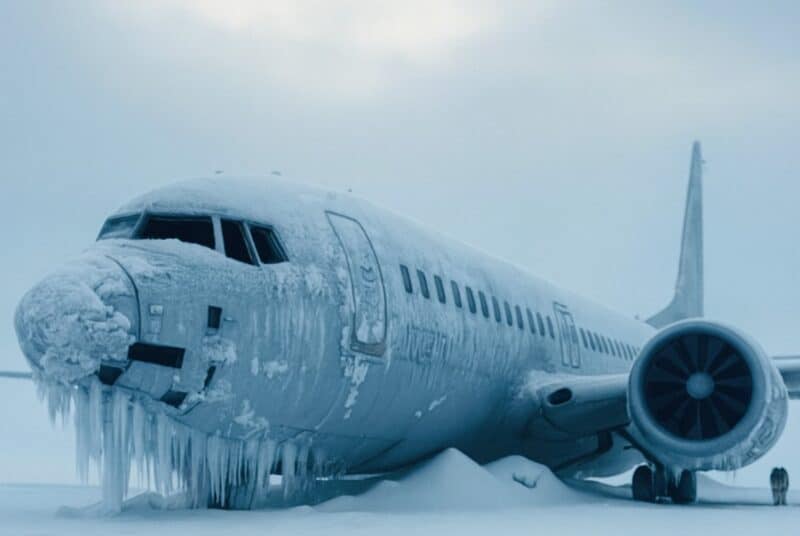It wasn’t just quiet inside; the silence felt manufactured, as if something actively suppressed sound itself.
There were no bodies in the seats.
Yet the aircraft was anything but empty.
Personal items still rested where people had left them: wallets, purses, a child’s stuffed toy with a faded button eye, old magazines, boarding documents. On one armrest sat an open book with a boarding ticket tucked into it.
The date read:
February 12, 1957.

Somebody muttered under their breath:
— But these aircraft models… didn’t exist in ’57.
And that sparked the real question — the one that chilled them more than the Arctic air:
if everyone left the plane… where did they go?
The cockpit door was locked from the inside.
They hesitated.
Then forced it open.
Inside sat two pilots — or what remained of them. Not skeletons. Not preserved corpses. Something almost untouched by time. Their expressions were peaceful, hands calmly on the controls, as if simply waiting for the next instruction.
One researcher whispered:
— No decomposition… no frost damage… the tissue—
He stopped. Because even he realized how impossible it sounded.
As if time had been unable to reach them.
But the worst surprise was still ahead.
In the rear of the aircraft they found a sealed chamber with no label, no markings — just a blank steel plate. They cut through the frozen lock.
A blast of cold hit them — sharper than the air outside.
Inside were only three items:
a heavy metal container,
an antique wooden chest that clearly belonged to another century,
and a folded note.
The note read:
“We should never have taken this flight.
We understood the risk.”
No one spoke.
Somehow, words didn’t feel safe.
They opened the metal container first.
No equipment. No documents.
Instead — carved masks with elongated faces and empty eyeholes. They looked ancient, almost predatory in design.
— Are these ritual pieces? — someone asked.
Another scientist mentioned cave markings in remote Alaska with similar symbols — warnings about regions belonging to “the unseen.”
They turned to the old wooden chest — its latch opened with ease.
Inside was a single photograph.
The same aircraft, unburied by ice, sitting on a sunny runway. The passengers smiling and waving. The pilots relaxed beside the door.
Dated: February 10, 1957.
Two days before the flight.
They were real people, living ordinary lives.
Not relics.
Not legends.
And that left only one terrifying possibility:
whatever happened — happened in the sky.
When the team stepped back outside, the wolves still sat in a wide circle, facing the plane like silent sentinels. Only after the researchers shut the door did the wolves finally rise and disappear into the trees — moving as one.
But just as the team prepared to leave —
they heard it.
A faint clank.
A slow shift of weight.
A step… from inside the plane.
They turned abruptly —
but the door was sealed.
No movement. No figures.
Yet the feeling of being watched lingered…
like something inside was quietly observing them through the frost.
Years later, some members of that expedition admitted in private:
they feared not the frozen pilots, not the masks, not the abandoned belongings…
They feared the unanswered questions.
Because some discoveries don’t reveal truth —
they reveal the limits of what we dare to know.
